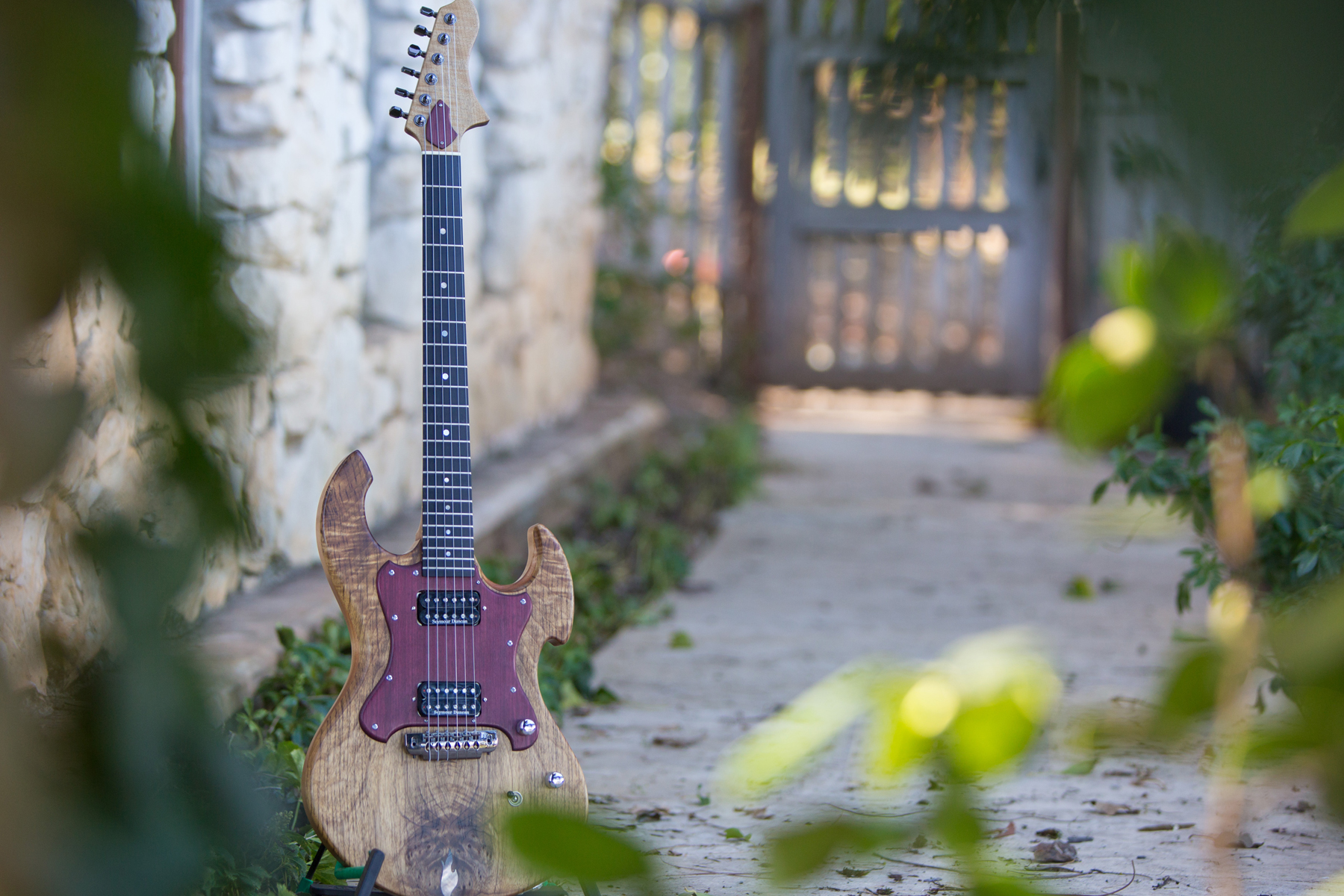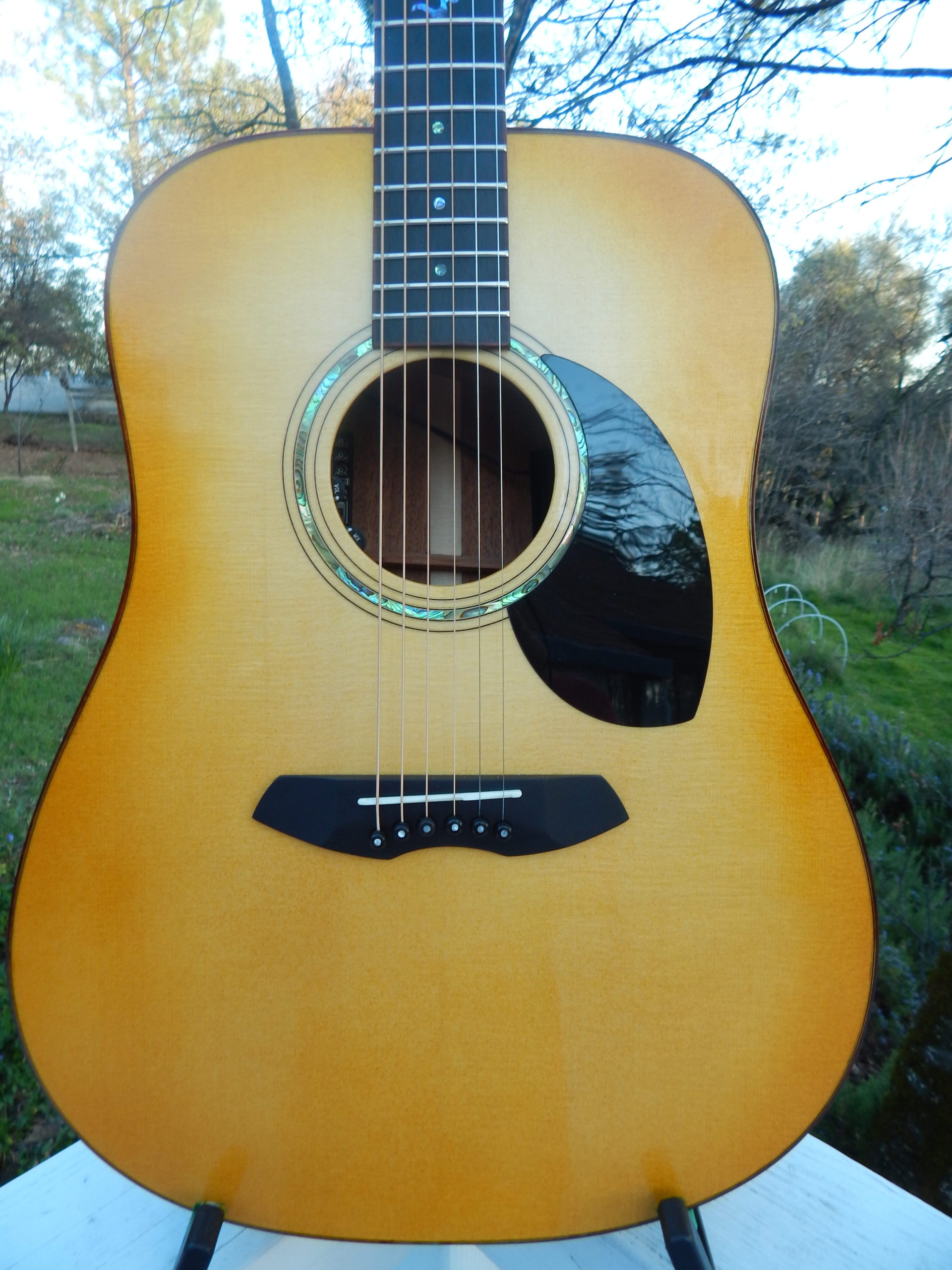Ah-i-ya
Ah-see-ya
Almost two years ago my wife and I were asked if we could be the dorm “mom and dad” at a high school dormitory. My wife already taught Spanish classes at the school and I helped with some volunteer work here and there so we were both very familiar with the school, the staff and many of the students. The two of us and the school are in a very rural part of the Sierra Nevada foothills, meaning that the school isn’t that big and the number of kids we would be watching wouldn’t be that great, six in all. The fun part is that the kids in the dorms were from all over the world; Hong Kong, Taiwan, Italy, the Czech Republic, and two sisters from Palo Alto, Ayah and Asia, who’s mom and dad are from Spain and Iraq. Throw in the fact that my wife is from Argentina and you have got a miniature U.N.!
During our time there I started tinkering around with some new design ideas and some different ways of doing things. When I asked my wife what should I name them; well, I’ll let you fill in the blank here.
What do you do when you have ideas? Well in my case, I sit at my workbench staring at a blank sheet of paper. After a while lines start to form. It kind of goes back and forth like this for a while. Lots of staring and thinking followed by drawing.
I had been wanting to design a couple new body shapes for a while and these are a couple of them. Since building these two guitars, I’ve built two others which I’ll write about soon.
I find it interesting how ideas work. You look at the blank page and what’s there, potential. Anything can happen. I spent a good amount of time working on the lines, the curves, the sweeps and turns. Not too long after completing the first two prototypes (about 2 years ago now) I started to see certain aspects of “my” designs in other luthiers work. I find it funny how that happens. I don’t think I am stealing from them or vise versa. Thoughts are universally rooted, not individually. This happens to us all. You have a great idea and then six months later you see your idea! I know it’s happened to me on several occasions. Suppose it means I’m doing something right. Right?…
They are both set neck guitars. I’ve some builder’s work where they have their set neck extend much further into the body than what you would see normally on a production guitar. I have always enjoyed this idea. It makes sense really. More neck to sit into the body, more strength and more tone transfer from neck to body. It’s been my opinion for a while now that the “tone” of a guitar, whether it’s dark or bright, the two main tonal distinctions people make in electric guitars, is in the neck wood. The body wood will contribute, just not nearly as much as the neck will. So having the neck extend further into the body to me, just makes sense.
Besides the extended neck, the other experiment was wanting a glossy finish on the body with an oiled finish on the neck. I love oil finishes. On bodies and especially on necks. I think they feel nicer, more natural. That’s an easier combo to make happen with a bolt on neck, but I wanted set necks. I like them more. But how does the process go? Glue in the neck, tape off the neck and finish the body, then oil the neck? That seemed like a hassle to me. But reading it just now, it doesn’t seem so bad!
What I decided to do was apply the finish to the body and the neck separately and once they were done, glue the neck into the body. This has its own challenges, mostly being that one must be very careful when glueing the neck into the body. You’re dealing with lacquer, glue, clamps and clamping cauls. If you apply too much pressure whilst clamping you could crack the finish or stress it it in some way. Or if you’re not being careful you might chip or scratch the finish in some way.
Basically, you need to be really careful!
On the third guitar I tried this method out on, the neck to body fit was too tight. So when I was clamping the neck in place I needed to apply more pressure than I did on these two guitars. That resulted in a couple stress cracks in the finish. Lesson learned!
The two necks are both built almost exactly the same. They are both multi laminate necks; maple, wenge, bubinga and flamed maple. Ahya has the maple fretboard and Asia has the rosewood fretboard. On both necks I experimented with making the new widths a little bit wider than standard necks. The nut width is 1 23/32 ( 1/32 more than a Les Paul nut) and at the last fret 2 5/16 ( 1/16 more than a L.P.). It doesn’t seem like much but boy oh boy does it feel different! I didn’t think it was going to be that noticeable but it really is. From various people playing them I learned that either A: you like it or B: you don’t.
It was funny to me to see who liked the necks the most because it was two very different people. One was my friend and great jazz guitarist Doug Pauly. He plays a lot finger picking with his right hand so having a little extra space for him was very comfortable. He is also on the taller side with bigger hands so it made sense, to me anyways. The other person was Raina, a very petite 16 year old! I was thoroughly surprised to learn that she liked Asia so much she decided to buy it!
I am constantly fascinated with who buys the guitars I build on spec. When you build a guitar for someone they are constantly on your mind, everything you do to the instrument you do with them in mind. When you build a guitar on spec, you have nobody in particular in mind. You might have some ideas that you want to try or what have you, but it’s always a mystery as to who will buy the guitar. And I am always tickled with who ends up buying one.
Besides the different fretboards, one other difference between the necks is the headstocks; one is 3×3 and the other 6 in line. The last difference is on Ahya’s neck and it is behind the scenes. When I was making the necks, I had one normal lengthen truss rod and another, much shorter, truss rod. It was 5 inches shorter which is quite a bit. I didn’t feel like ordering another truss rod and then waiting the 2-3 days for it to arrive. I was in a good flow and wanted to keep things movin and groovin. I was looking around the shop for inspiration when LO! They they were. Two carbon fiber rods that I bought at some point, many, many moons ago; the purpose for the purchase completely escapes me. Whatever the reason for buying them, they were about to be used! I decided to put one rod on either side of the truss rod starting around the fourth fret, extending past the truss rod to the end of the neck. The truss trod would still be able to perform its duties adjusting the neck’s relief, and the carbon fiber rods would their job and help keep the neck straight and stiff. And to this day, the neck is straight as I want it to be. The multi laminate neck helps as well. A more risky experiment would have been to use the shorter truss rod with out the carbon fiber rods. My guess is that because the neck was made with such strong and stiff woods, it would’ve been fine. Maybe I’ll try it some day….
Another experiment with these guitars was how I applied the color to the bodies. I had never finished a guitar red, or blue, or any solid color for that matter. And I almost did here… while yes, Asia is mostly red and Ahya is mostly blue, there are other shades of reds, blacks, purples and colors in-between. Some subtle and some not so. I applied the color directly to the wood with paper towels. I would mix some pigments with some lacquer thinner and start wiping it on. It was really fun. I tried a little on a piece of scope wood to get into the mindset and after 10 or so minutes felt good to try on the bodies. After I got the color where I wanted, it was lacquer, lacquer, lacquer!
I used Seymour Duncan’s Phat Cats on Asia and Seymour Duncan’s Pearly Gates on Ahya. I absolutely love the way the Phat Cats sound. They are clear, crisp but not harsh in any sort of way. They will cut through the mix but still retain a warmth that I just love. The pearly Gates are a great set of humbuckers. They have a lot of cross over appeal; so whether your playing blues, jazz or rock, they will for sure get the job done
And that’s it. Another day, another couple of guitars.
Till Next Time!
SPECS
Asia (Ah-see-ya)
-Basswood body,
-maple/wenge/bubinga/flammed maple/bubinga/wenge/maple neck
-rosewood fretboard
-25” scale
-Seymour Duncan Phat Cat pickups (humbucker sized P-90s)
-Schaller tune-a-matic bridge and stop tailpiece
-Schaller locking tuning keys
-Master volume, master tone and a three way selector switch
-Bone nut, 1 23/32” wide
-2 5/16” wide last fret
-Schaller strap locks
-Tung oiled neck
-Nitro finished body
-Deep set-neck
Ayah (Ah-ya)
-Basswod body
-maple/wenge/bubinga/flammed maple/bubinga/wenge/maple neck
-Figured maple fretboard
-24.750” scale
-Seymour Duncan Pearly Gates set
-Gotoh tune-a-matic bridge with individual string height adjustment and a Gotoh stop tailpiece
-Schaller Di Vinci tuning keys
-Master Volume, master tone, three way selector switch, 2 three way mini switches for series/split/parallel of each pickup.
-Bone nut 1 23/32” wide
-2 516” wide last fret
-Schaller strap locks
-Tung oiled neck
-Nitro finished body
-Deep set-neck.














